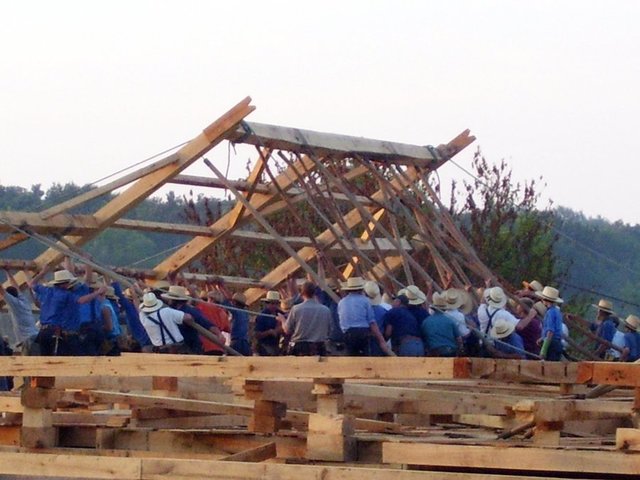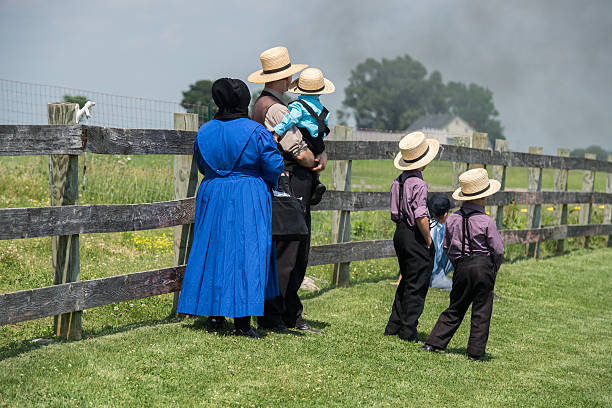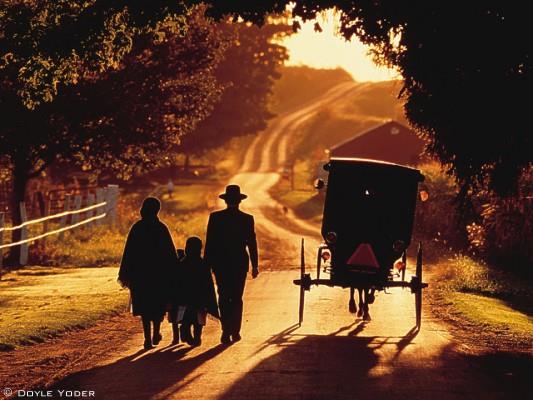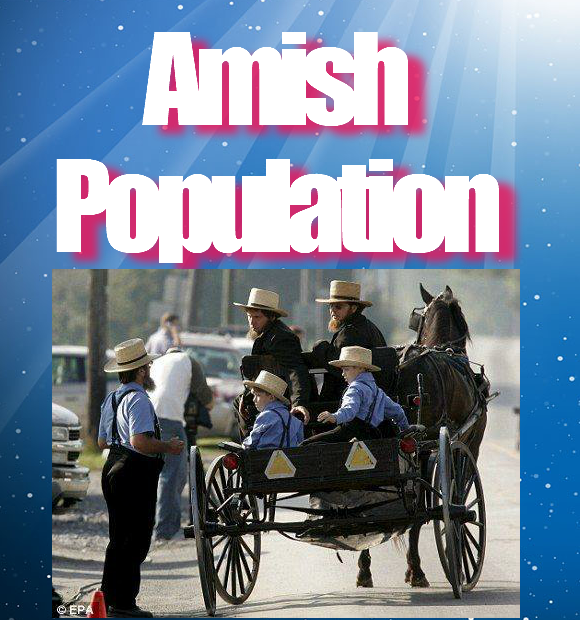Who Are The Amish And Where Do They Live?
At the beginning of the 20th century, the country had an Amish population of
Ohio has the largest Amish population, and Holmes County has the largest Amish population of any county in the country. Pennsylvania comes in second, and the Lancaster area is probably the most famous Amish area.
Indiana is third and about
There are two Amish communities outside of the United States and Canada.
One is in Colonia Naranjita, Bolivia and the other is in Argentina.
Who Are The Amish?
The Amish are a Christian community, or I should
There are also Amish-Mennonite groups. Where groups have left the Amish, taken the Mennonite name and maintained many of the Amish
There are several different branches of the Amish. The most conservative
The four main groups of Amish are:
the Old Order
the New Order
the Beachy Amish
the Amish Mennonites
Among these groups, there are many other divisions. The Beachy Amish and Amish Mennonites drive cars and have electricity, while the Old and New Order groups still use horse and buggy.
Among the Old Order Amish groups, you will find:
Old Order Amish
Nebraska Amish
Swartzentruber Amish
Buchanan Amish
Swiss Amish
Andy Weaver Amish
Troyer Amish
Byler Amish
Holmes Old Order
Elkhart-LaGrange
Lancaster Amish
Tobe Amish
Michigan Churches
Each group will have their own set of
Their Religious Beliefs
The Amish faith is
Unlike most churches, the Amish only meet every other Sunday. They meet in members’ homes or barns. After
Baptism is for adults only. Baptism not only symbolizes the new birth in Jesus
Amish Church Services
As mentioned, church services are held at the homes of members. Often in the barn, if the house doesn’t have a large enough room.
Before the service, ladies of the church will help the host family clean and prepare for the meeting. Benches and hymnals are transported in a special wagon from home to home.
During the service, the ministers sit up front and the congregation, including children, sit on hard, wooden benches without backs or cushions. Hymns are sung in High German. Although the congregation speaks Pennsylvania Dutch, a German dialect, not everyone understands everything they are singing.
Every minister is allowed to preach, and most churches have three or more minister, including the bishop. If there are visiting ministers from other congregations, they are also allowed to preach. The church service can last four hours or more, without a break.
After the service, there is a meal. Usually sandwiches, soup and desserts. I have visited two New order Amish services, with friends. At both, the meal was peanut butter (whipped with honey) and jelly sandwiches with ham, Swiss cheese and soup.

The Amish church wagon. These are the benches the Amish use for Sunday church services.
The Amish Belief In Nonresistance
The Amish are not pacifists, as commonly believed. They are nonresistant. Pacifism is a philosophy of bringing about change in nonviolent ways. Nonresistance is the Christian practice of not only living peacefully with all men, but of not becoming involved in the affairs of the government.
The Amish, and Mennonites, will not join the military. The Bible plainly teaches that we are to “love our enemies” and we are not to “return evil for evil.” They Amish and Mennonites have served in non-combat areas during times of war.
The Amish also do not vote. Again, to avoid becoming entangled in the affairs of this world, although this is starting to change. More and more Amish are voting, at least on local issues.
Why Do The Amish Women Wear Those Bonnets?
Simply put, it is a Bible command. 1 Corinthians 11:10 says, ” For this cause ought the woman to have power on her head because of the angels.” In
1 Corinthians 11:5 it says, “But every woman that prayeth or prophesieth with [her] head uncovered dishonoureth her head: for that is even all one as if she were shaven.”
My question is why don’t all Christian women obey the Bible in this.

Are All Amish Farmers?
No. More and more the Amish are working in construction, in factories
In tourist areas like Lancaster, PA and Holmes County, Ohio, many Amish are capitalizing on the tourism with shops that cater to the visitors.
I have some Old Order friends that own a popcorn and fudge business in Berlin, Ohio. It is a modern store and they even have a web page and a Facebook page for their business.
In Peoli, Ohio, there is a Schwartzentruber Amish gentleman that has a business selling aluminum roofing and siding. He became so successful, the Bishop of the church made him split the business. Now he is only allowed to sell certain colors and another church member has a business selling the other colors. The Amish value hard work, but the Bishop felt that if the man made too much money, he might become prideful or get involved in things he’d be better off avoiding.

Why Do They Live In Such An Old Fashion Way?
The Bible calls for Christians to be separate from the world. Although we are “in the world,” we are not to
The Amish seem to take these commands very
Many of the groups still use horse and buggy for transportation. The biggest reason for this is that it keeps the Amish close to home, family
For long
The Amish also do not have telephones in their homes. You will see little phone booths they have built in their fields or away from the house, in the yard. They believe that time spent on the telephone is not time well spent. They also believe that by limiting the phone, it encourages members to visit with other members, keeping the community close.
Most Amish will have telephones in their place of business, and even those without electricity in the home will have them in their business. We are also seeing more and more Amish with cell phones.
Do They Use Modern Technology At All?
As already mentioned, the Amish will use public transportation and hired drivers. They tend to have telephones, electricity and flush toilets in their places of business, though not in the homes.
More and more, Amish are using cell phones and the internet. Many Amish businesses now have web pages and even Facebook pages. Builders will use power tools on the job, and many generate their own electricity for home and farm use.
Some do all farming with horses, other groups allow tractors. Some groups require the tractors to have steel wheels. This is to keep them from being use for street transportation. I even heard of one community that allowed rubber tires, but the tires had to be filled with rice and not air.

Are All Amish The Same?
No. As mentioned, there are several sub-groups of Amish, and among them, the different communities also have their own rules. Some use horse and buggy, some own cars and trucks. Some have no electricity, some have electricity. Some dress in only black or dark blue others dress in pretty colors or even allow patterns in their clothing.
Rules can be as strange as allowing
Do The Amish Pay Taxes?
Many people think the Amish do not pay taxes, but this is not true. Although some Amish do not pay into, or collect, Social Security, the Amish pay all the other taxes that we all pay. As more Amish are going to work in factories and in non-Amish shops, more and more are also starting to pay and collect Social Security.
Although they pay property taxes and other taxes, the Amish do not take all the benefits from their taxes that non-Amish do. They have their own private schools, yet in communities with a large Amish population, they are a source of significant funds for the public (government) schools.
Conclusion
Anyone who has ever visited Amish Country, or read books about the Amish, or seen a movie about the Amish will tell you everything they know about the Amish. You, the reader, probably thought you knew a lot about the Amish even before reading the article.
But the more I live among the Amish and get to know them, the more I discover that everything I know about the Amish is right, yet everything I know about the Amish is also wrong. They do not fit into neatly defined boxes any more than anyone else.
I mentioned to a Beachy-Amish minister once that I had seen an Old Order
That has become how I best understand the Amish. They have rules, values and seem quite different from us at times, but before you say, “The Amish don’t FILL IN THE BLANK_,” remember, some Amish will do anything.
Please feel free to comment and post your questions in the comments section.


















